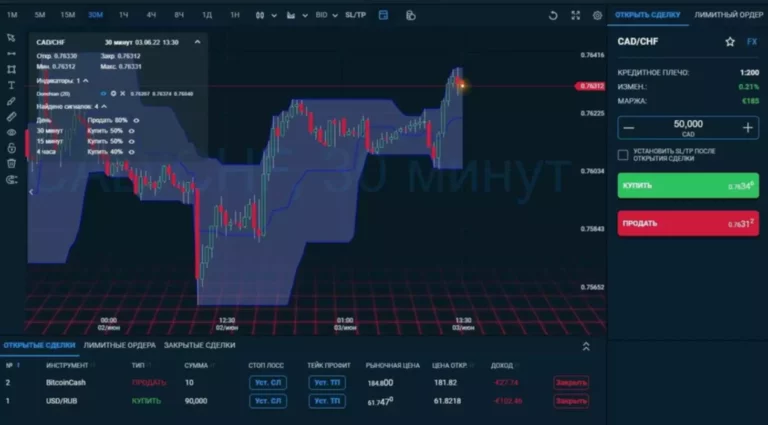Content
The more the LPs within a platform’s liquidity pool, the more liquidity the platform users enjoy. Thus, most DeFi platforms, such as DEXs, crypto lending platforms, and yield farms, incentivize LPs to commit their funds. The incentive is a portion of trading fees generated whenever a trade occurs within the pool – when funds flow in and out of the pool. However, LPs are also prone to risks such as impermanent loss, where the asset locked in the liquidity pool is worth less than its present market value. AlphaPoint is a technology firm offering infrastructure to liquidity provider vs market maker launch and manage digital asset platforms.
What Is a Crypto Liquidity Provider? Here’s What To Know
The automation of a market for trading provides benefits like reduced slippage, faster trades, rewards for LPs, and the ability for developers to create new dApps. In these instances, it is vital to provide ample liquidity to stabilise the prices and ensure that healthy currencies don’t suffer from temporary shocks to the system. In this case, LPs and MMs are the first line of defence, supplying funds wherever and whenever required. This mutually beneficial system allows the modern forex economy to thrive despite the occasional bumps on the road. The two types are primarily separated by their https://www.xcritical.com/ institutional capabilities and scopes.
The Power of FIX API: Optimizing Order Execution and Trade Matching for Brokerage Firms with TickTrader’s Advanced API
Liquidity in forex also ensures that traders receive the best possible deals without having to wait or sacrifice their desired price quotes. BlockFi is another popular liquidity provider with over $10 billion under management sourced from over 1 million users across the world. Clients can buy/sell their cryptocurrencies as well as earn cryptos from using BlockFi. Users can earn as much as 9.5% APY with their BlockFi Interest Account (BIA). Additionally, they can earn 3.5% in BTC amounting to $100 with their BlockFi Visa Credit Card. Users can also borrow from BlockFi at an extremely low-interest rate of just 4.5%.
- In fact, it might even be easier for you to use 1inch to compare DEXs and liquidity pools since it displays estimated Annual Percentage Yield (APY) from various liquidity pools in real time.
- Partnering with non-compliant providers can result in legal penalties and fiduciary ramifications for your clients.
- Returns for providing liquidity depend on how the pool works and what assets it holds.
- If you plan to start a crypto exchange, partnering with an LP can be a challenge without the blockchain technology to implement their services.
- To provide your clients with the best trading experience, evaluate the provider’s ability to execute trades quickly and with minimal slippage.
Crypto as a Service (CaaS): Key Benefits, Providers, and Use Cases

LPs continually quote bids and ask prices, they act as market makers and set reference points for other participants. LPs provide a pool of assets (stocks, currencies, etc.) open for buying and selling, ensuring smooth transactions without significant price fluctuations. Always consider market conditions and external factors such as volatility, liquidity, and historical performance, which can influence the risk of impermanent loss and the stability of your investments. While they act as market makers, the primary distinction is that market makers have roots in traditional finance.

LPs partnership with broker allows them to manage their positions and exposure more effectively and this leads to a stable and efficient market. Electronic Communication Networks (ECNs) connect traders to numerous LPs, they offer competitive prices and transparent execution. Through specialized software, brokers monitor the market and give clients real-time and accurate pricing information.
In the world of cryptocurrency, a liquidity provider is fundamental in ensuring seamless trading operations. They create what’s known as a liquidity pool, a collection of assets that allows participants in the crypto market to execute buy and sell orders with minimal price slippage. This slippage typically occurs due to insufficient market liquidity, leading to significant price changes, especially in large trades.
To qualify for the Binance Spot Liquidity Provider Program, participants must meet certain requirements, which include providing sufficient market-making volume on eligible trading pairs. Approved users must maintain their service quality in order to continue participating in the program. Join hands with Ninja Promo’s expert team of crypto market-making experts. Take your token project to the next level with our market-making services. It can take your token project liquid within 6-12 months and get your token listed on a tier 1 exchange. With over 12 years of experience, it has proven its expertise in solving the most common challenges token issuers face.
Price slippage is simply the difference between an asset’s expected price and the price the asset is actually executed at. Many investors don’t like surprises and want to buy assets at prices they know will stay constant. With the B2Prime approval by CySEC, it is now possible to provide institutional-grade liquidity to customers in over 30 countries. All clients will benefit from greater security, knowing they are supported by a world-leading, multi-regulated technology and liquidity provider. Now, let’s move to the core of this article and discuss liquidity providers.
In this realm, distinguishing the role of a Liquidity Provider vs Market Maker is crucial, as both are fundamental to the industry’s vitality and efficiency. In practice, however, most governance tokens of DEXs are still concentrated in the hands of a few wealthy individuals and, often, their own developers. In fact, most DEXs actually are very much under the control of their own developers, who are able to implement changes and manipulations on their own.
This means they take the other side of the trade when there is an imbalance of buying and selling in the market. Now that you know the basics, it is time to focus on the multiple platforms that provide the deepest liquidity pools. Crypto exchanges are the greatest source of liquidity in the crypto domain.
To collaborate with a reliable source of liquidity, LPs should prioritize precise execution and provide complete post-trade clarity. The operational system should be comprehensive, particularly during market data announcements that might lead to unforeseen circumstances on the market. You should be able to actively monitor transaction execution utilizing automated trading software or an app that allows you to gather comprehensive information. Multiple liquidity providers may bring different trading possibilities in terms of processor speed, leveraging capabilities, amount of trading tools, and so on. Exploring each of these sectors is highly recommended to discover a certain supplier’s benefits.
The following article examines the leading crypto liquidity providers and analyzes their services, enabling you to make an informed decision. Ultimately, liquidity providers are the backbone of efficient and stable operations in both cryptocurrency exchanges and DeFi platforms. Liquidity provision in modern markets requires diversity among liquidity providers to facilitate risk transfer and efficiently match buyers with sellers during continuous trading.
While aiming for the highest profit is tempting, it inherently comes with increased risk. While using the NBLP method, you don’t have to negotiate with a provider — you just choose a convenient option from the list of those connected to your aggregator. As a rule, large Tier 1 suppliers use reliable software, meaning that there is multi-stage protection against failures. However, if you use your own liquidity aggregator, customized to your specific needs, you will have more controls to debug the situation in case it needs to be done promptly.
In order to understand the trading process, one also needs to learn about the Automated Market Maker (AMM). Perhaps the lowest risk of impermanent loss is when both assets in the liquidity pool pairs are stablecoins. This risk is usually referred to as the smart contract Another thing that liquidity providers should keep in mind is smart contract risks. Once assets have been added to a liquidity pool, they are controlled exclusively by a smart contract, with no central authority or custodian.
So if you were to contribute liquidity (in the shape of assets) to liquidity pools on these DEXs, you would be issued LP tokens. These tokens track your individual contributions to the overall liquidity pool and correspond in direct proportion to your share of liquidity in the overall pool. It is called impermanent because you don’t lose anything if the price returns to $1,500 – essentially, you don’t realise any profit or loss for as long as you keep your assets in the liquidity pool. Generally, younger or newer platforms that haven’t had their smart contracts properly or robustly audited will be the ones more at risk of security attacks.
Leave a Reply